Our consultants assist students to focus on a specific gap in the knowledge and meet
the requirements in this chapter needed to defend the choice of that gap.
Chapter 1, with a highly focused review of the literature, and is normally the “prospectus” that a committee approves before the “proposal” to start research is approved. After the prospectus is approved, some of the review of literature may be moved into Chapter 2, which then becomes part of the proposal to do research.
Chapter 1 is the engine that drives the rest of the document, and it must be a complete empirical argument as is found in courts of law. It should be filled with proofs throughout. It is not a creative writing project in a creative writing class; hence, once a word or phrase is established in Chapter 1, use the same word or phrase throughout the dissertation. The content is normally stylized into five chapters, repetitive in some sections from dissertation to dissertation. A lengthy dissertation may have more than five chapters, but regardless, most universities limit the total number of pages to 350 due to microfilming and binding considerations in libraries in those institutions requiring hard copies.
Use plenty of transitional words and sentences from one section to another, as well as subheadings, which allow the reader to follow the writer’s train of thought. Following is an outline of the content of the empirical argument of Chapter 1. Universities often arrange the content in a different order, but the subject matter is the same in all dissertations because it is an empirical “opening statement” as might be found in a court of law. (Note that a dissertation could also be five pages of text and 50 pages of pictures of dragonfly wings and qualify for a Doctor’s degree in entomology.)
State the general field of interest in one or two paragraphs, and end with a sentence that states what study will accomplish. Do not keep the reader waiting to find out the precise subject of the dissertation.
Background of the Problem
This section is critically important as it must contain some mention of all the subject matter in the following Chapter 2 Review of the Literature 2 and the methodology in Chapter 3. Key words should abound that will subsequently be used again in Chapter 2. The section is a brief two to four page summary of the major findings in the field of interest that cites the most current finding in the subject area. A minimum of two to three citations to the literature per paragraph is advisable. The paragraphs must be a summary of unresolved issues, conflicting findings, social concerns, or educational, national, or international issues, and lead to the next section, the statement of the problem. The problem is the gap in the knowledge. The focus of the Background of the Problem is where a gap in the knowledge is found in the current body of empirical (research) literature.
Statement of the Problem
Arising from the background statement is this statement of the exact gap in the knowledge discussed in previous paragraphs that reviewed the most current literature found. A gap in the knowledge is the entire reason for the study, so state it specifically and exactly.
Use the words “gap in the knowledge.” The problem statement will contain a definition of the general need for the study, and the specific problem that will be addressed.
Purpose of the Study
The Purpose of the Study is a statement contained within one or two paragraphs that identifies the research design, such as qualitative, quantitative, mixed methods, ethnographic, or another design. The research variables, if a quantitative study, are identified, for instance, independent, dependent, comparisons, relationships, or other variables. The population that will be used is identified, whether it will be randomly or purposively chosen, and the location of the study is summarized. Most of these factors will be discussed in detail in Chapter 3.
Significance of the Study
The significance is a statement of why it is important to determine the answer to the gap in the knowledge, and is related to improving the human condition. The contribution to the body of knowledge is described, and summarizes who will be able to use the knowledge to make better decisions, improve policy, advance science, or other uses of the new information. The “new” data is the information used to fill the gap in the knowledge.
Primary Research Questions
The primary research question is the basis for data collection and arises from the Purpose of the Study. There may be one, or there may be several. When the research is finished, the contribution to the knowledge will be the answer to these questions. Do not confuse the primary research questions with interview questions in a qualitative study, or survey questions in a quantitative study. The research questions in a qualitative study are followed by both a null and an alternate hypothesis.
A hypothesis is a testable prediction for an observed phenomenon, namely, the gap in the knowledge. Each research question will have both a null and an alternative hypothesis in a quantitative study. Qualitative studies do not have hypotheses. The two hypotheses should follow the research question upon which they are based. Hypotheses are testable predictions to the gap in the knowledge. In a qualitative study the hypotheses are replaced with the primary research questions.
In Chapter 1 this is a summary of the methodology and contains a brief outline of three things: (a) the participants in a qualitative study or thesubjects of a quantitative study (human participants are referred tyo as participants, non-human subjects are referred to as subjects), (b) the instrumentation used to collect data, and (c) the procedure that will be followed. All of these elements will be reported in detail in Chapter 3. In a quantitative study, the instrumentation will be validated in Chapter 3 in detail. In a qualitative study, if it is a researcher-created questionnaire, validating the correctness of the interview protocol is usually accomplished with a pilot study. For either a quantitative or a qualitative study, using an already validated survey instrument is easier to defend and does not require a pilot study; however, Chapter 3 must contain a careful review of the instrument and how it was validated by the creator.
In a qualitative study, which usually involves interviews, the instrumentation is an interview protocol – a pre-determined set of questions that every participant is asked that are based on the primary research questions. A qualitative interview should contain no less than 10 open-ended questions and take no less than 1 hour to administer to qualify as “robust” research.
In the humanities, a demographic survey should be circulated with most quantitative and qualitative studies to establish the parameters of the participant pool. Demographic surveys are nearly identical in most dissertations. In the sciences, a demographic survey is rarely needed.
The theoretical framework is the foundational theory that is used to provide a perspective upon which the study is based. There are hundreds of theories in the literature. For instance, if a study in the social sciences is about stress that may be causing teachers to quit, Apple’s Intensification Theory could be cited as the theory was that stress is cumulative and the result of continuing overlapping, progressively stringent responsibilities for teachers that eventually leads to the desire to quit. In the sciences, research about new species that may have evolved from older, extinct species would be based on the theory of evolution pioneered by Darwin.
Some departments put the theoretical framework explanation in Chapter 1; some put it in Chapter 2.
Assumptions, Limitations, and Scope (Delimitations)
Assumptions are self-evident truths. In a qualitative study, it may be assumed that participants be highly qualified in the study is about administrators. It can be assumed that participants will answer truthfully and accurately to the interview questions based on their personal experience, and that participants will respond honestly and to the best of their individual abilities.
Limitations of a study are those things over which the research has no control. Evident limitations are potential weaknesses of a study. Researcher biases and perceptual misrepresentations are potential limitations in a qualitative study; in a quantitative study, a limitation may be the capability of an instrument to accurately record data.
Scope is the extent of the study and contains measurements. In a qualitative study this would include the number of participants, the geographical location, and other pertinent numerical data. In a quantitative study the size of the elements of the experiment are cited. The generalizability of the study may be cited. The word generalizability, which is not in the Word 2007 dictionary, means the extent to which the data are applicable in places other than where the study took place, or under what conditions the study took place.
Delimitations are limitations on the research design imposed deliberately by the researcher. Delimitations in a social sciences study would be such things as the specific school district where a study took place, or in a scientific study, the number of repetitions.
Definition of Terms
The definition of terms is written for knowledgeable peers, not people from other disciplines As such, it is not the place to fill pages with definitions that knowledgeable peers would know at a glance. Instead, define terms that may have more than one meaning among knowledgeable peers.
Summarize the content of Chapter 1 and preview of content of Chapter 2.
Source: Barbara von Diether, EdD
Printable PDF
Moving from Prompt to Thesis–
How to Turn a Prompt into a Thesis Statement
Your writing prompt will shape your writing project. You must be sure to fully answer the prompt within your essay or discussion and the best way to do this may be to use the prompt itself to create your thesis statement.
It is a good idea to make direct statements about what your prompt is asking you to do. You can do this by using some of the language from the prompt itself to create your thesis statement.
Here is an example of turning a prompt into a thesis.
Prompt for an Argumentative Essay: Technology has made it easier than ever for people to reach out to others at any time and in any location. Explain how different methods of technology have changed the way we now connect or disconnect with others. Research several of the pros and cons associated with our overwhelming use of technology. Make your own argument on whether technology has increased or decreased our level of connectedness to others and support your position by using research. Finally, explain why this is an important issue to discuss.
First, underline some of the main points of the prompt.
Prompt for an Argumentative Essay:Technology has made it easier than ever for people to reach out to others at any time and in any location. Explain how different uses of technology have changed the way we now connect or disconnect with others. Research several of the pros and cons associated with our overwhelming use of technology. Make your own argument on whether technology has increased or decreased our level of connectedness to others and support your position by using research. Finally, explain why this is an important issue to discuss.
And now, let’;s turn that prompt into a thesis.
Thesis: While technology has some advantages in our ability to connect to others, it also has some major drawbacks. Technology has actually decreased our level of connectedness to others because it allows us to disconnect from the people in our physical environment and it does not foster the social skills needed in order to help us to connect to those around us.
As you can see, I have used some of the vocabulary from the prompt itself and I have made direct statements that relate to the prompt. I have made my argument clear and have included the reasons I have for taking my position.
Here is another example.
Prompt of a Compare/Contrast Essay: Write a paper in which you compare and contrast two speeches with the same argument. Identify key strategies used by these speakers to persuade their audience. Compare and contrast the strategies used in these speeches and how they were used. Explain why these differences might exist.
Thesis: While there are several similarities between the strategies used in each of these speeches, there are significant differences as well. The differences between the strategies used by Williams and those use by Smith are based on each author having a different audience and purpose.
And here is one more:
Prompt of a Theory-based Essay: Choose a controversial issue from the list you were given. In your paper, you will choose at least three of the psychological theories we have studied during this course and apply each of these to this issue. Describe each of these theories and explain how they would approach this issue. What are the pros and cons of each theory’;s approach to this issue? Which approach would you apply if you were faced with this issue?
Thesis: By exploring the psychological theories of x, y, and z and how they can be applied to the issue of plastic surgery, we can evaluate the strengths and weaknesses of each and determine which will be the best approach to apply to this topic.
For more help with writing issues, please take a look at the Ashford Writing Center!
Ashford Writing Center
Proprietary information of Ashford University, Created by Academics, CR216079


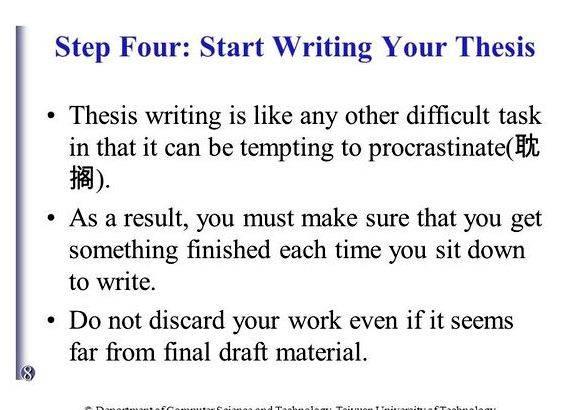

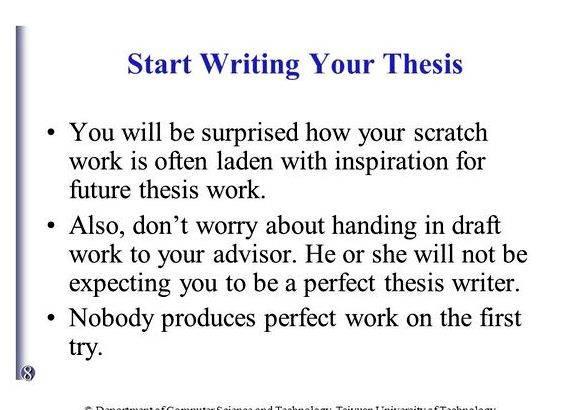

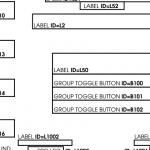 Electronic voting system thesis proposal
Electronic voting system thesis proposal Complete sample of thesis writing
Complete sample of thesis writing Formulating a history thesis writing
Formulating a history thesis writing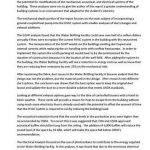 Writing an executive summary thesis
Writing an executive summary thesis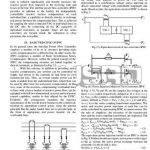 Interline power flow controller thesis writing
Interline power flow controller thesis writing






